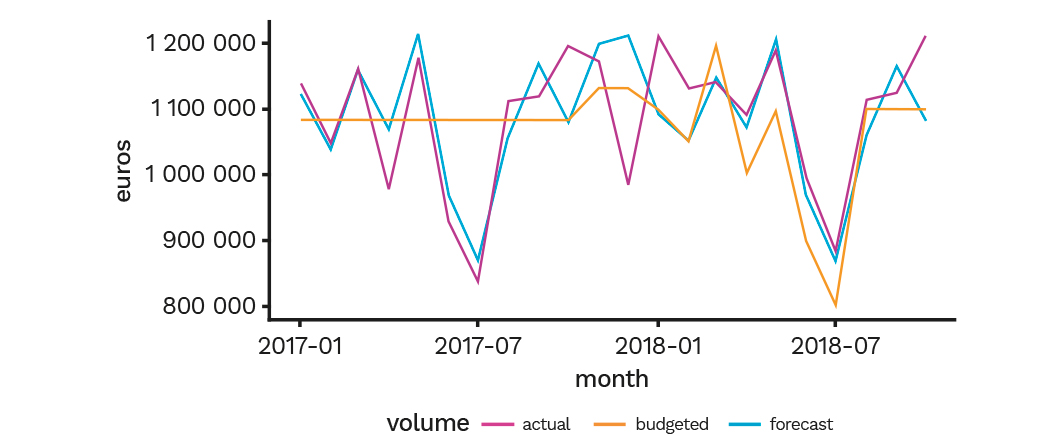Financial administration prepared for increased volumes
Budgeting in Hansel is interesting and challenging. The figures are influenced by a variety of aspects which are difficult to anticipate. The budgeting process begins every autumn, and several experts use a great deal of their working hours on budgeting. The budgets have been fairly accurate in general, but despite all the effort, there has been plenty of room for improvement in category-specific figures and joint procurement figures, in particular.
We wanted to change this, which is why we tasked Saara Kolari, who is preparing her master’s thesis at Aalto University, with investigating whether we could do better or at least reach an equally viable final result by using time series analytics, which could free up some time for other duties.
History data going back more than ten years available
Analytics requires data, and that is something we have. Our joint procurement data as of 2008 is available in a format that is easy to utilise, because Hansel obligates its contractual suppliers to report the purchases of their customers monthly. A total of 26 of the largest joint procurement processes from 2017 were selected for the study. They covered approximately 85% of the total sales volume.
The modelling was done using ARIMA models, which anticipate the future values of the time series based on the previous values and error terms generated from forecasts. The models excellently account for seasonal variation, which is a significant component of Hansel’s joint procurement. Usability of the models in the improvement of budgeting was assessed by comparing the forecasts generated by the model and the budgeted figures prepared by the Hansel experts with the actual joint procurement volumes in 2017 and 2018.
Towards automated budgeting
The accuracy of the forecasts generated by the ARIMA models when compared to Hansel’s previous budgeting model exceeded all expectations. The models’ average errors were clearly lower than those of the budgeting model; the models succeeded in precisely modelling the behaviour of the joint procurement volume in up to 23 of the joint procurement processes. The final result was that Hansel’s budgeting can be automated. Automation will improve the accuracy and naturally reduce the amount of manual labour. This was great news for Hansel’s employees.
This was the starting point for the development of the budgeting process in Hansel’s joint procurement, which was used for the first time when preparing the 2020 budget. It is still too early to say how accurate the forecasts actually are, but at least many of the experts were of the opinion that the work was more pleasant in terms of the processes used.
This time, analysts did most of the work required to produce the base figures. The model was functioning excellently in some of the joint procurement processes, and there was no need for manual adjustments of the figures. On the other hand, the model was unable to generate a forecast in the case of joint procurement processes for which proper history data was not available. The situation will naturally improve as more data is collected.
Requirements introduced due to the new legal practice will also facilitate budgeting, because the customers are obligated to provide a fairly exact estimate of their future procurement volume upon joining a joint procurement process. Combined with the ARIMA model, this data will most likely further improve Hansel’s budgeting accuracy and – above all – will free up the experts’ time for other duties.
Read next: Procurement experts assist customers

